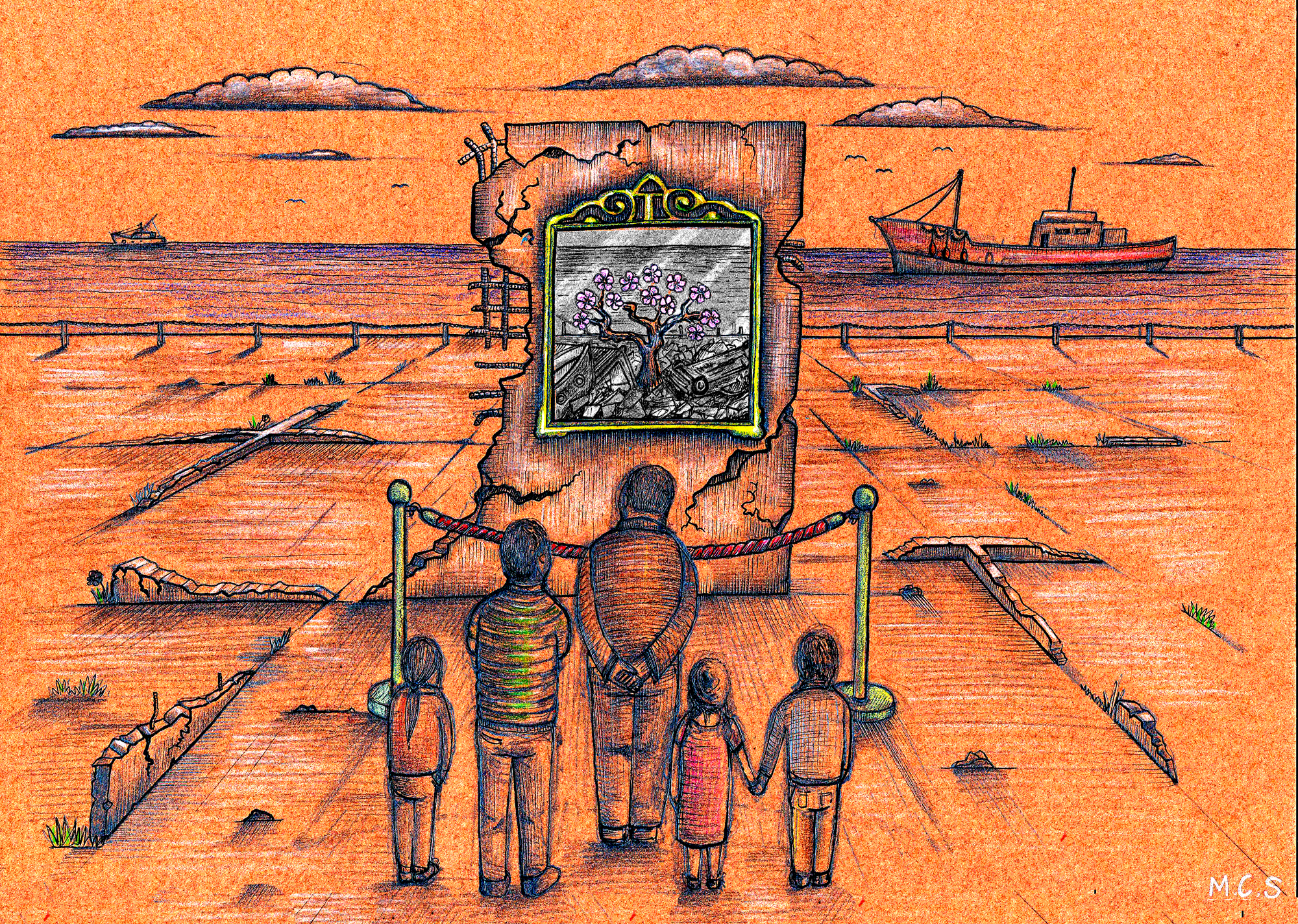In her film "Heart of a Dog," the American artist Laurie Anderson explores loss as exemplified by the death of a loved one. A recurring theme is the attack on the World Trade Center on Sept. 11, 2001, an incident that profoundly changed the way New Yorkers like Anderson confronted their environment. "It was like a door opening," she says at one point, "and there was no going back."
This sense of traumatic transformation also runs through the art that has been produced in response to the Great East Japan Earthquake, where the sea, a source of life and livelihood for the people who lived along the coasts of Fukushima, Iwate and Miyagi prefectures, suddenly became a deliverer of death. Art has had a tough time doing justice to the scope of that concept, since it was captured so graphically and immediately on video that went global. The purpose of much 3/11 art is to provide a human dimension to a catastrophe that was both natural and man-made in that the tsunami generated by the earthquake destroyed a nuclear power plant that was not sufficiently prepared for such an eventuality. The disaster is still with us.
In the Kamakaji Lab theater company's play "Radio 311," performed earlier this month at the Tokyo Metropolitan Theater to commemorate the fifth anniversary of the disaster, an ungainfully employed young Tokyo man returns to his apartment to find a group of damp spirits gathered around his radio. They died in the tsunami but cannot proceed to the next world until they find out about loved ones. By conveying directly this sense of loss, the play clarifies the young man's prerogatives. The awkwardly titled musical, "Care Wave Aid," extends the idea to childhood and then expands on the message. Staged several years ago, the musical featured actual children from the affected area who survived the tsunami and wanted to explain what their experience had taught them. They lost "lives of normality," an assertion that echoes Anderson, but while that experience was felt and is expressed individually, the musical attempts to show how many children in the world suffer from "disaster" on a daily basis and thus have no normality to begin with. Just as compassion was the natural reaction toward victims of the quake and tsunami, the children want the world to recognize the trauma of others who live with loss every day.



















With your current subscription plan you can comment on stories. However, before writing your first comment, please create a display name in the Profile section of your subscriber account page.